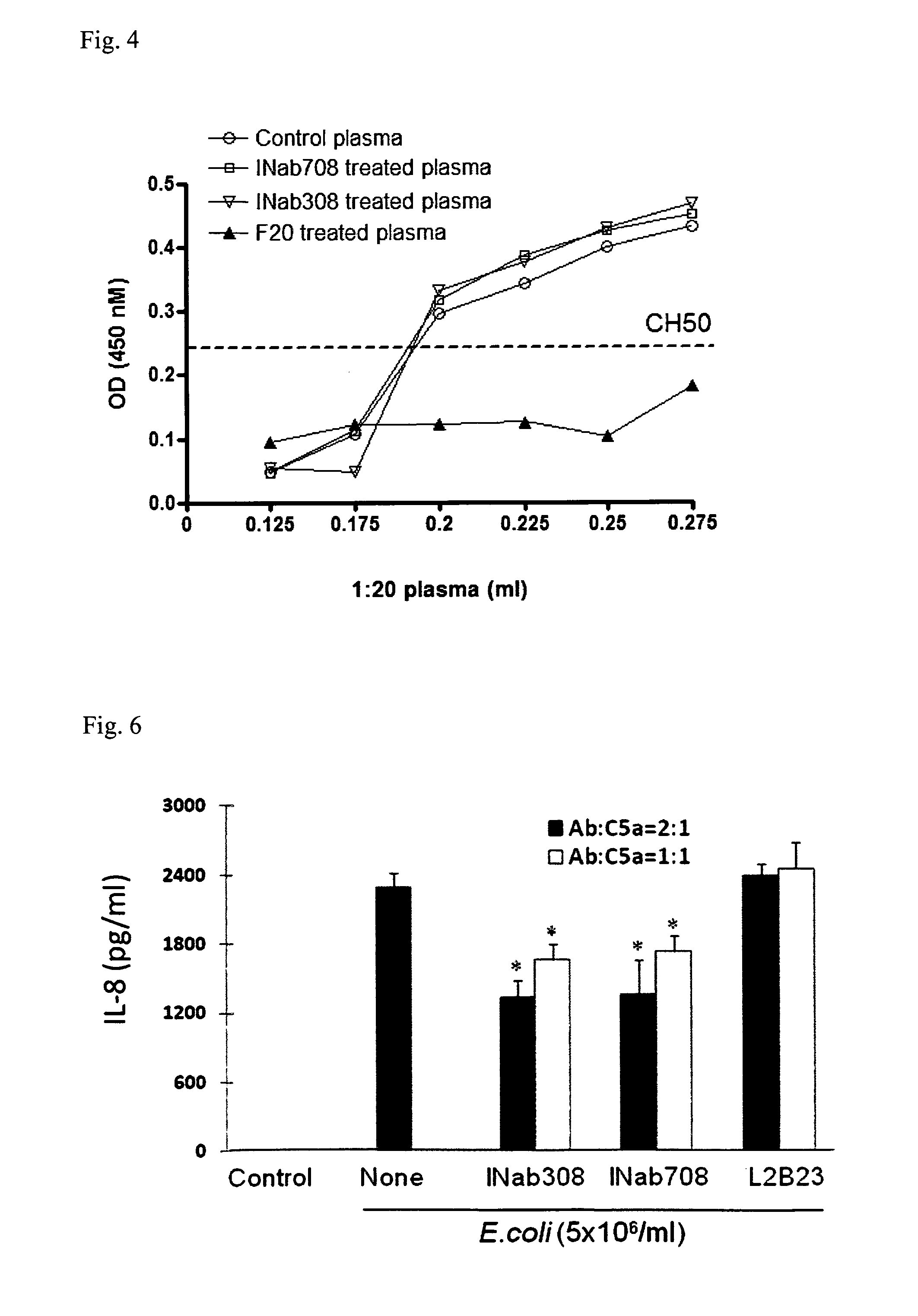Anti-C5a binding antibodies with high block activity
a binding antibody and anti-c5a technology, applied in the field of anti-c5a binding antibodies with high block activity, can solve the problems of wide dysfunction, harmful effects, and high detrimental effects of c5a
- Summary
- Abstract
- Description
- Claims
- Application Information
AI Technical Summary
Benefits of technology
Problems solved by technology
Method used
Image
Examples
examples
1. Methods
1.1 Recombinant C5a and C5a Mutant Preparation:
[0199]A DNA sequence encoding human C5a was obtained by reverse transcriptase-polymerase chain reaction (RT-PCR) using RNA isolated from peripheral blood leukocytes. C5a mutants were generated using PCR methods by introducing the GCT (alanine) into the mutation site. The C5a DNA was then ligated with pET-32a (NOVAGEN™, Gibbstown, N.J.), and the ligation mixture was used to transform JM109-competent cells. The expression plasmids were transformed into BL21 using a standard calcium chloride method. A single colony from a Luria-Bertani broth (LB) plate was picked up, inoculated into LB medium with ampicillin, and incubated at 37° C. overnight. The culture was transferred to 2 L of LB medium and incubated at 37° C. until the mid-exponential phase (A600≈0.6), and then isopropyl-β-thiogalactopyranoside (IPTG) was added to a final concentration of 0.1 mM. The cells were allowed to continue to grow at 30° C. overnight and harvested by...
PUM
 Login to View More
Login to View More Abstract
Description
Claims
Application Information
 Login to View More
Login to View More - R&D
- Intellectual Property
- Life Sciences
- Materials
- Tech Scout
- Unparalleled Data Quality
- Higher Quality Content
- 60% Fewer Hallucinations
Browse by: Latest US Patents, China's latest patents, Technical Efficacy Thesaurus, Application Domain, Technology Topic, Popular Technical Reports.
© 2025 PatSnap. All rights reserved.Legal|Privacy policy|Modern Slavery Act Transparency Statement|Sitemap|About US| Contact US: help@patsnap.com



